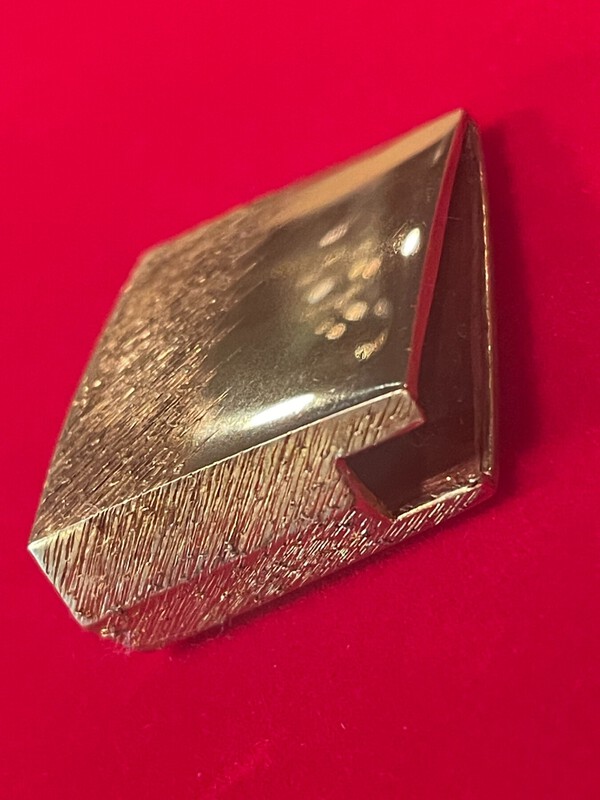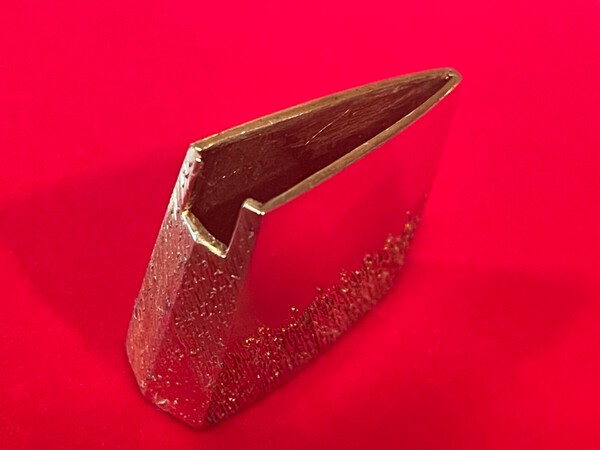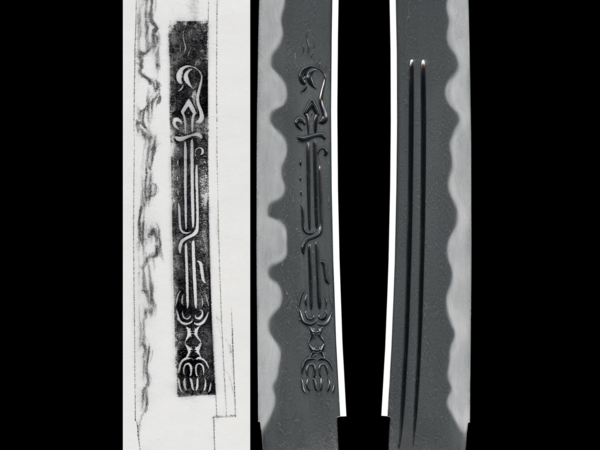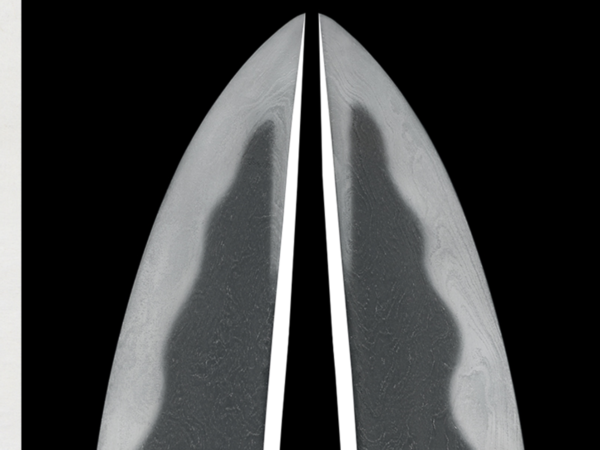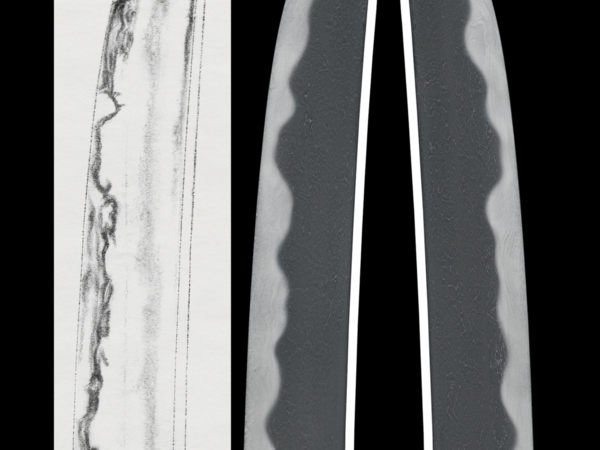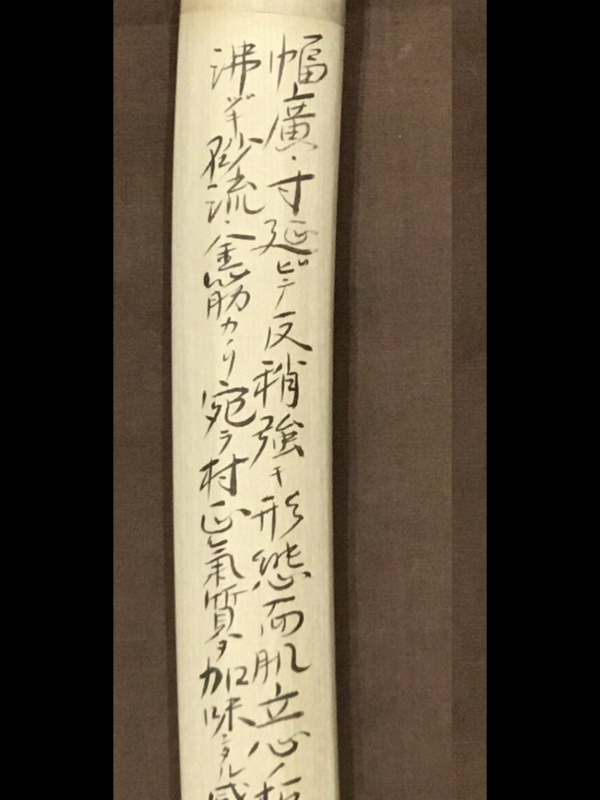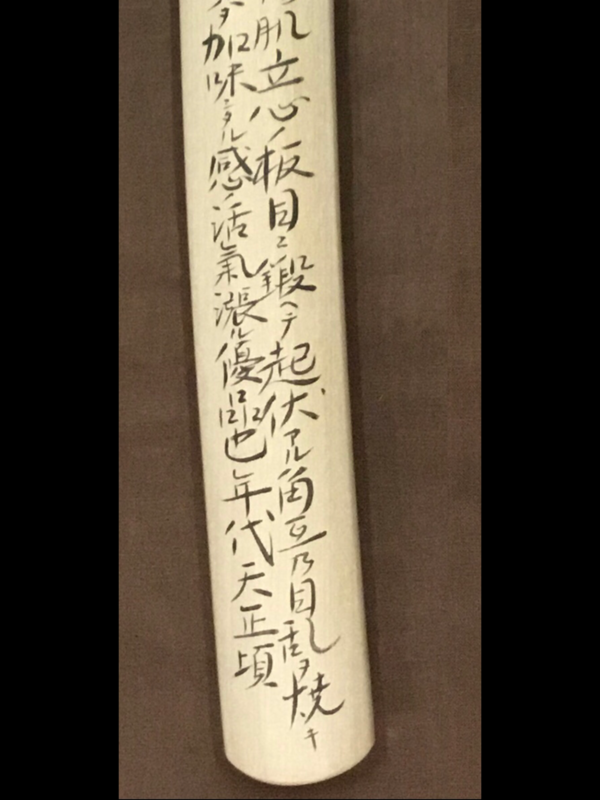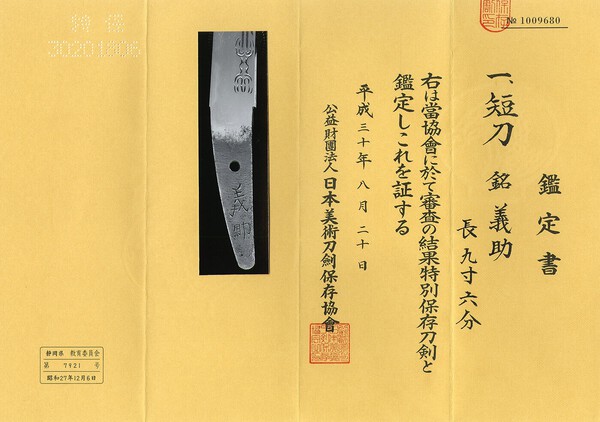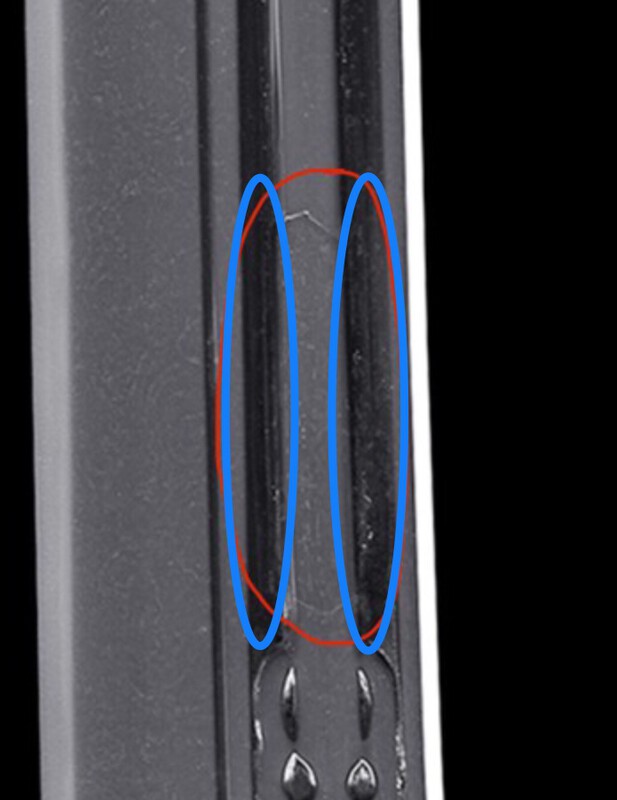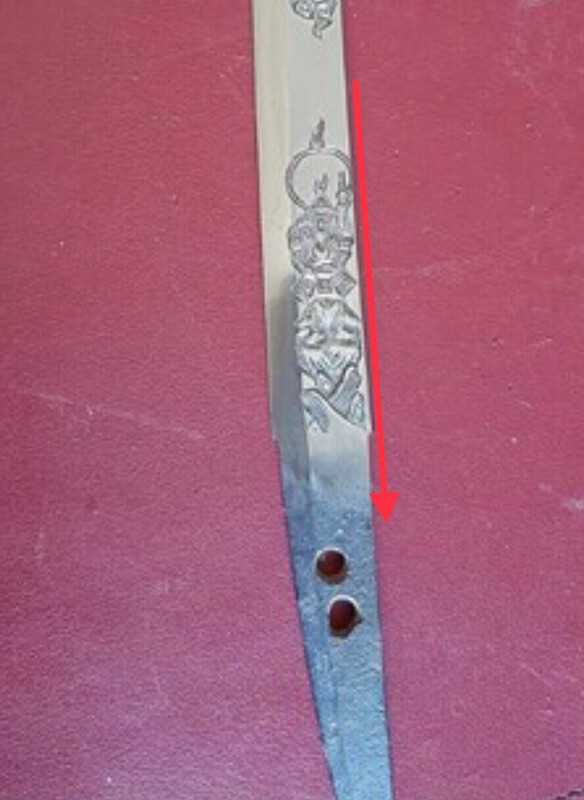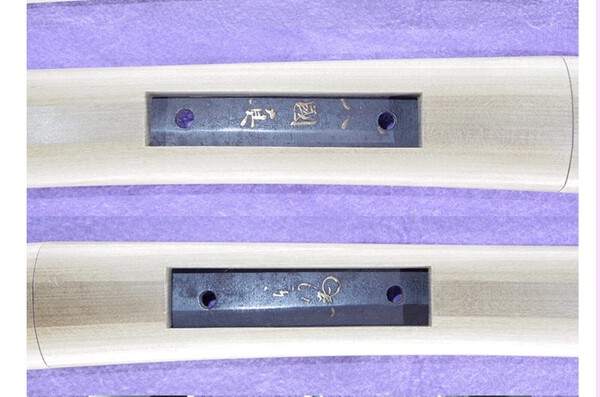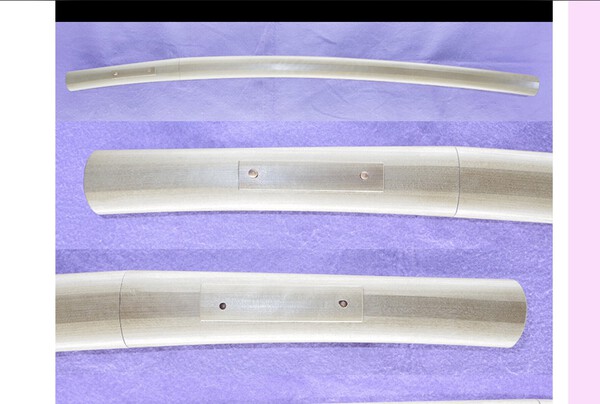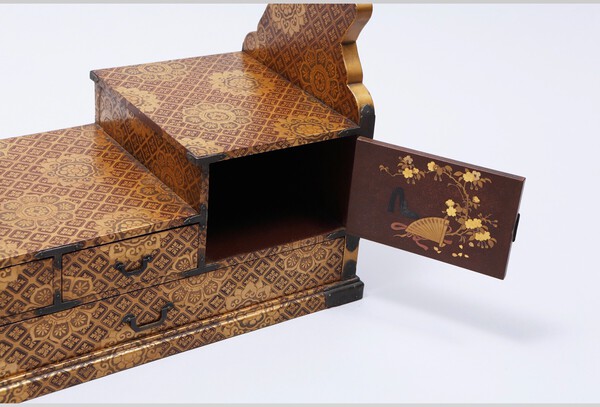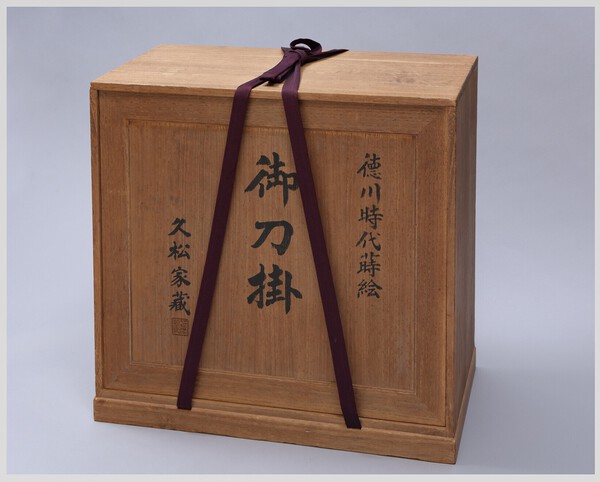
RichardP
Gold Tier-
Posts
232 -
Joined
-
Last visited
-
Days Won
2
Content Type
Profiles
Forums
Events
Store
Downloads
Gallery
Everything posted by RichardP
-
-
1) Sugata Wide and Long 2) Kitae Hada ____ Itame ____ Forged? Jigane? 3) Hamon ________ Gunome Midare ____ Yaki(ire?) 4) Hataraki Nie? Sunagashi ___ Kinsuji___ 5) Impression ___ Muramasa ______________________ (“A lively and excellent product with a sense of Muramasa’s temperament” — Google Tanslate)
-
Thank you so much, Jan and Moriyama-san!
-
-
-
-
-
-
Hello All— I recently purchased a Shimada Yoshisuke tanto in shirasaya from Aoi. They were kind enough to agree to approach Tanobe-sensei on my behalf to request a sayagaki, and I was delighted to hear that he was agreeable. A few weeks later, and the pictures I received back left me a bit startled—Tanobe-san had filled both sides of the saya with beautiful calligraphy (see below). Without wanting to put Aoi on the spot (I’m grateful they agreed to approach Tanobe-san at all), I asked them if sayagaki translation is a service they offer. Their response omitted any reference to my translation enquiry altogether, so I feel uncomfortable pursuing the issue with them any further. While I enjoy the idea of attempting a translation myself, Aoi is waiting for my approval to begin the export process. My concern is that it’s not inconceivable that it’s worthwhile pushing this blade for higher papers, and since it’s already in Japan, I should make that decision now. To be clear, I don’t pretend to have the knowledge base to form an opinion as to whether particular blades are of juyo quality—but given how much ink Tanobe-san invested on the back side of the saya, I’m assuming that either a) he has reservations about the current attribution and is elucidating his reasoning, or b) he really likes the blade. (I couldn’t find any “chin”s or “cho”s, but I hope it’s the latter!!) I hate to approach you folks without having done any of my own translation homework, but I feel I should let Aoi know as soon as possible where to send the blade. And the last thing I want is to be the gaijin making everyone uncomfortable with awkward questions about pursuing juyo papers, for a blade that Tanobe-san just downgraded… Thank you all so much for any translation services, as well as any advice on whether to pursue higher papers. Thank you, Rick
-
Incandescent bulb to be relic of the past
RichardP replied to Utopianarian's topic in General Nihonto Related Discussion
As a Luddite grouch it really pains me to admit just how awesome modern LED lighting technology has become. You can get 2700-3000K LED bulbs now that are just as rich, warm, and “natural-seeming” as any incandescent Edison-style bulb. I really struggled to adapt at first—“From my cold, dead han… oh these are really nice.” -
Hello Marc— The lower hairline maybe looks consistent with an attempt to conceal a patch, but the one on top is so pronounced that it casts a shadow. I dunno what is going on, but since it doesn’t seem like any attempt was made to conceal the upper line, I’d guess that this isn’t umegane, or any malicious attempt at concealing anything. I’m assuming that this is a blade you’re considering purchasing and the seller’s description doesn’t mention umegane? If so, have you asked the seller directly? I would think the seller should be willing to provide clear photos of the portions that are in shadow, if you request them. Is it a reputable seller offering an inspection/return policy?
-
It seems like we’re discussing: 1) the fiduciary obligation to one’s family to ensure that an art investment is recouped post-mortem, and 2) the duty owed to the art object itself, having voluntarily undertaken the responsibility of being its temporary guardian. #1 might be optional, but #2 seems ethically unavoidable.
-
-
I really enjoyed Roger Robertshaw’s e-book on Hizen-to (http://hizento.com/book-tadayoshi-history.php - $40). Lots of information logically presented, as well as photos of the mainline smiths’ signatures and clues for spotting gimei. The author’s enthusiasm is infectious!
-
Basswood is easy to work with, and can be sourced in pretty large blocks for relatively little cash:
-
Very handsome! Can I ask what modifications you made to the drawers? Did the drawers come with sword racks?
-
Hello all, I found this Rai-school blade with a kinpun-mei over at e-sword.jp, and am puzzling over the curious windows cut into the handle. Why was this done? All I can think of is that this was intended to keep the kinpun-mei from rubbing off when the tsuka is removed/replaced—but It seems like there would be simpler solutions, like recessing the interior portions that might make contact with the mei. Is this a common modification? Regards, Richard (https://www.e-sword.jp/katana/2210-1040.htm)
-
Interesting. (I’ve wondered how shinsa panels dealt with questionable tameshi-mei on otherwise sho-shin blades.) Regards, Richard
-
Thanks for the distinction Piers (I read the attribution as being to Hisamatsu-Matsudaira nobility, but you’re quite right it just mentions “family”). Cheers!
-
https://www.toukenkomachi.com/index_en_antique.html Gorgeousness and gorgeousity! Sure LOOKS like a pre-Meiji daimyo’s kake—to my ignorant eyes—but that seems like a heck of a claim to provenance…
-
Never knew tachi kake came in such a variety of forms! An attention-getting companion piece to the standard deer-antler katana kake might be a tachi kake made by articulating a deer spinal column, using the pelvis as the base, with its natural “cup” to hold the kashira…
-
Another one here: https://www.nihonto.com/11-11-21/
-
Any pics of the boshi? (Dunno if wakizashi from this smith/school were characteristically signed katana-mei, but hopefully we’re not looking at a katana that’s been shortened from the wrong end.)

